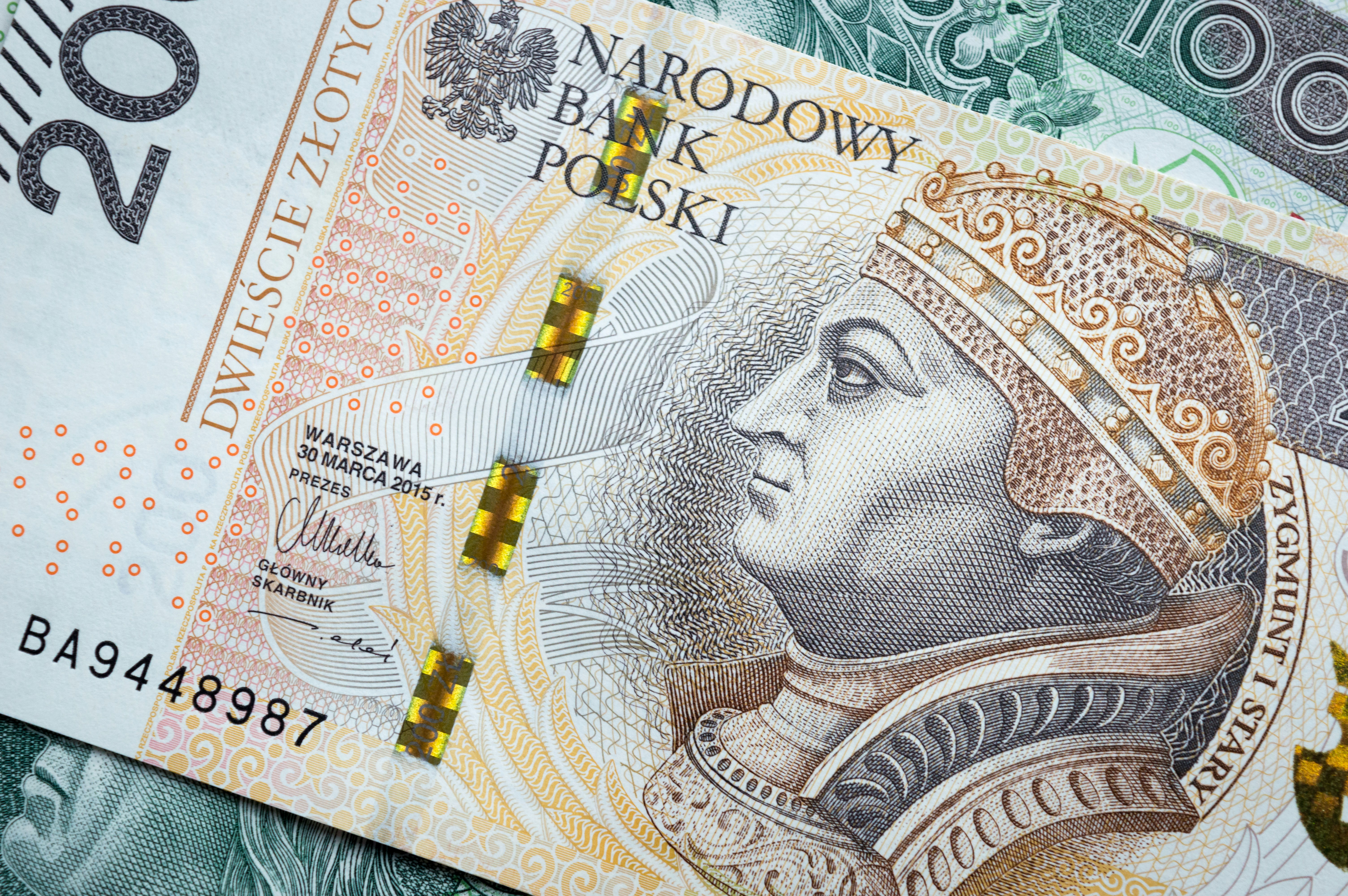Γράφημα μπάρας – Τι είναι, τεχνική ανάλυση, παραδείγματα, τύποι

Αν ασχολείστε με το trading, πιθανότατα έχετε ακούσει για διάφορα διαγράμματα τιμών: μπάρες, κηροπήγια, στήλες και άλλα. Σε αυτό το άρθρο θα δούμε πιο αναλυτικά ένα από τα πιο δημοφιλή και ευέλικτα εργαλεία – το γράφημα μπάρας. Χρησιμοποιείται συχνά από τους traders για να αναλύουν τάσεις και χρονικές περιόδους στις χρηματοπιστωτικές αγορές. Είτε μόλις ξεκινάτε είτε θέλετε να βελτιώσετε τις γνώσεις σας, η καλή κατανόηση των γραφημάτων μπάρας μπορεί να ενισχύσει την ικανότητά σας στην ανάλυση της αγοράς.
Πίνακας περιεχομένων
ΒΑΣΙΚΑ ΣΥΜΠΕΡΑΣΜΑΤΑ
ΤΙ ΕΙΝΑΙ ΤΟ ΓΡΑΦΗΜΑ ΜΠΑΡΑΣ;
ΣΧΗΜΑΤΙΣΜΟΙ ΜΠΑΡΑΣ
ΤΥΠΟΙ
ΟΦΕΛΗ
ΓΡΑΦΗΜΑ ΜΠΑΡΑΣ VS ΙΣΤΟΓΡΑΜΜΑ VS ΓΡΑΦΗΜΑ ΣΤΉΛΗΣ
ΓΡΑΦΗΜΑ ΜΠΑΡΑΣ VS ΓΡΑΦΗΜΑ ΚΗΡΟΠΗΓΙΩΝ
ΣΥΜΠΕΡΑΣΜΑ
ΣΥΧΝΕΣ ΕΡΩΤΗΣΕΙΣ (FAQS)
Βασικά συμπεράσματα
- Ένα γράφημα μπάρας στο trading απεικονίζει την κίνηση της τιμής ενός περιουσιακού στοιχείου για μια συγκεκριμένη χρονική περίοδο.
- Κάθε μπάρα τιμής περιλαμβάνει μια κάθετη γραμμή που δείχνει την υψηλότερη και τη χαμηλότερη τιμή, καθώς και μικρές οριζόντιες γραμμές δεξιά και αριστερά που υποδεικνύουν τις τιμές ανοίγματος και κλεισίματος.
- Αυτά τα γραφήματα χρησιμοποιούνται συχνά για την ανάλυση των τάσεων της αγοράς, τον εντοπισμό της μεταβλητότητας των τιμών και τον προσδιορισμό πιθανών σημείων αντιστροφής.
Τι είναι το γράφημα μπάρας;
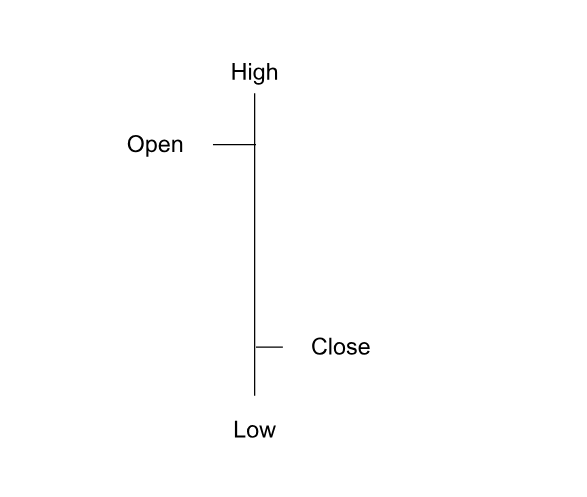
Ένα γράφημα μπάρας είναι ένα οπτικό εργαλείο στο trading που δείχνει τις αλλαγές στην αξία ενός περιουσιακού στοιχείου μέσα σε μια συγκεκριμένη χρονική περίοδο. Κάθε μπάρα στο γράφημα αντιπροσωπεύει μία περίοδο, όπως ημέρα, εβδομάδα ή ώρα, ανάλογα με τις προτιμήσεις του trader. Η κάθετη γραμμή σε κάθε μπάρα δείχνει την υψηλότερη και τη χαμηλότερη τιμή για την περίοδο αυτή, ενώ τα οριζόντια σημάδια στα αριστερά και δεξιά δείχνουν την τιμή ανοίγματος και κλεισίματος αντίστοιχα.
Ανάλυση γραφήματος μπάρας
Οι μπάρες είναι ένας συγκεκριμένος τύπος γραφήματος στο trading που συνδυάζει κάθετες και οριζόντιες γραμμές.
- Οι κάθετες γραμμές δείχνουν τις υψηλές και χαμηλές τιμές.
- Τα οριζόντια σημάδια δείχνουν τις τιμές ανοίγματος και κλεισίματος.
Μια μπάρα που κλείνει σε υψηλότερη τιμή από την τιμή ανοίγματος θεωρείται συνήθως bullish, δηλαδή δείχνει ανοδική τάση. Το αντίθετο θεωρείται bearish και δείχνει καθοδικό κλίμα στην αγορά.
Οι μπάρες βοηθούν τους traders να αναλύουν τα στοιχεία της αγοράς και να εντοπίζουν πιθανές ευκαιρίες συναλλαγών στην τεχνική ανάλυση. Εξετάζοντας τις υψηλές, χαμηλές, και τις τιμές ανοίγματος–κλεισίματος κάθε μπάρας, μπορούν να εκτιμήσουν τη μεταβλητότητα και το γενικό κλίμα της αγοράς για τη συγκεκριμένη περίοδο. Μια μακρύτερη μπάρα δείχνει μεγαλύτερες διακυμάνσεις τιμών, ενώ μια πιο κοντή δείχνει περισσότερη σταθερότητα, αφού το μήκος της μπάρας υποδηλώνει το εύρος των τιμών.
Σχηματισμοί μπάρας
Οι σχηματισμοί μπάρας σε ένα γράφημα είναι πολύ σημαντικοί για τους traders, γιατί τους βοηθούν να εντοπίζουν πιθανές κινήσεις της αγοράς και να εκτιμούν το γενικό κλίμα. Η αναγνώριση αυτών των μοτίβων μπορεί να βοηθήσει στην πρόβλεψη αν η αγορά ανεβαίνει, πέφτει ή κινείται πλάγια.
Μερικοί από τους πιο γνωστούς σχηματισμούς:
-
Up-Day και Down-Day:
Up-Day: Η τιμή κλεισίματος είναι υψηλότερη από την προηγούμενη ημέρα. Δείχνει πιθανή ανοδική τάση (bullish).
Down-Day: Η τιμή κλεισίματος είναι χαμηλότερη από την προηγούμενη ημέρα. Δείχνει αρνητικό κλίμα (bearish).
-
Inside-Day και Outside-Day:
Inside-Day: Η υψηλή και χαμηλή τιμή της ημέρας βρίσκονται μέσα στο εύρος της προηγούμενης ημέρας. Συνήθως δείχνει περίοδο σταθεροποίησης και μπορεί να προηγείται συνέχισης της τάσης.
Outside-Day: Η μπάρα καλύπτει το εύρος της προηγούμενης ημέρας και έχει υψηλότερο υψηλό και χαμηλότερο χαμηλό. Δείχνει έντονη κίνηση σε μία κατεύθυνση και επιβεβαίωση της τάσης.
- Trading Range: Η αγορά κινείται οριζόντια μέσα σε συγκεκριμένο εύρος, ανάμεσα σε επίπεδα στήριξης και αντίστασης. Δείχνει αβεβαιότητα πριν από πιθανή άνοδο ή πτώση.
Reversal Patterns (Σχηματισμοί Αναστροφής): Υποδηλώνουν πιθανή αλλαγή τάσης.
Key reversals: Μπάρες με έντονη κίνηση αντίθετη από την κυρίαρχη τάση.
Double tops/bottoms: Δείχνουν πιθανή αναστροφή στην αγορά.
Spikes (Αιχμές)
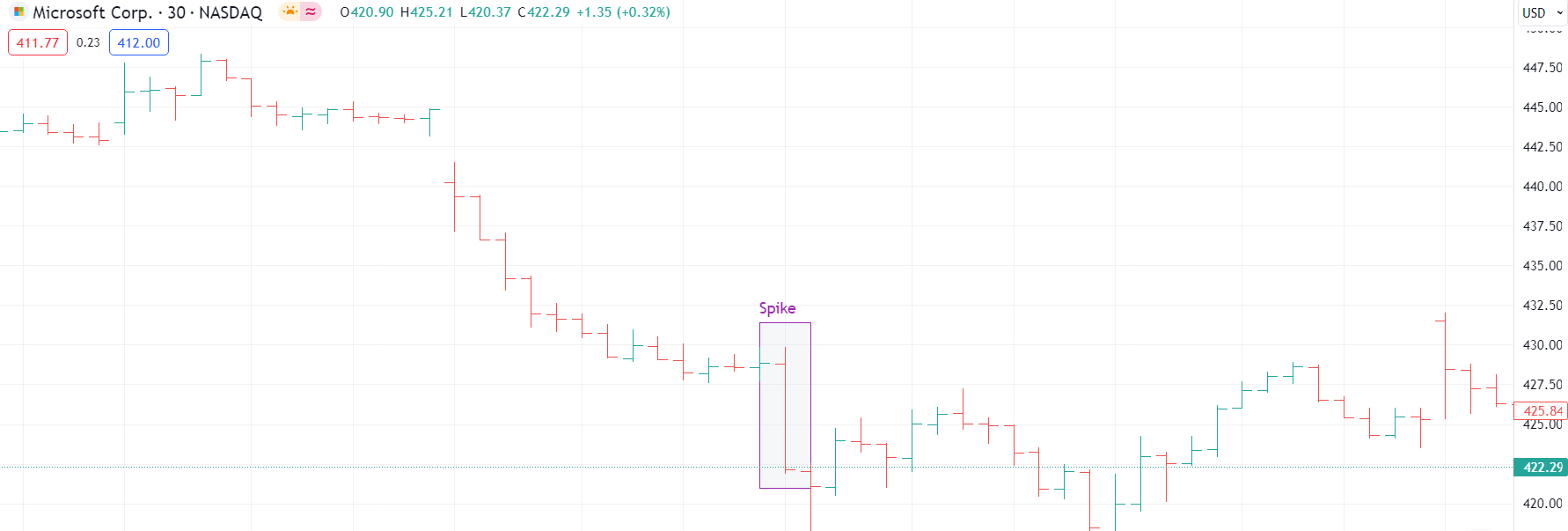
Οι αιχμές ή long bars δείχνουν γρήγορες και συχνά απότομες αλλαγές τιμών σε μικρό χρονικό διάστημα, συνήθως λόγω ξαφνικών ειδήσεων ή γεγονότων.
- Μπορούν να λειτουργήσουν ως σήμα αναστροφής, ειδικά μετά από παρατεταμένη τάση.
- Σε ανοδική αγορά, μια ξαφνική αύξηση μπορεί να δείξει κορύφωση και πιθανή πτώση.
- Σε καθοδική αγορά, μπορεί να σημαίνει μαζικές πωλήσεις και πιθανό κατώτατο σημείο.
Κενά τιμών (Price Gaps)
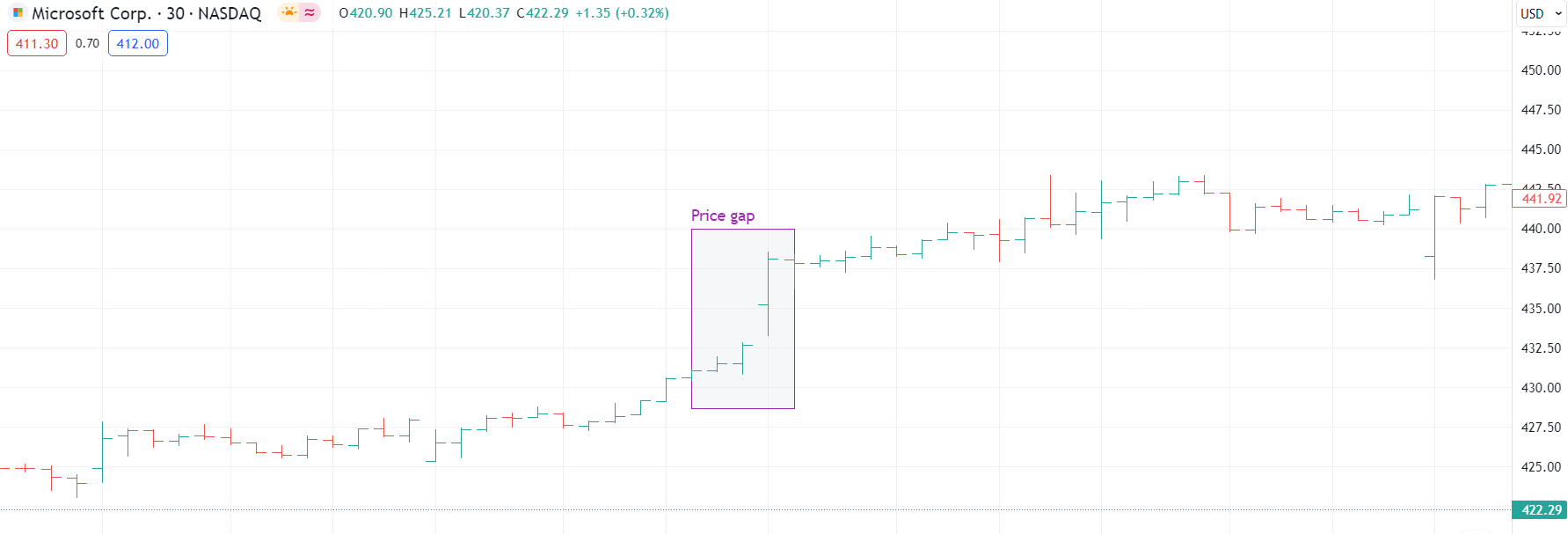
- Τα κενά τιμών εμφανίζονται όταν υπάρχει διαφορά ανάμεσα στην τιμή κλεισίματος μιας ημέρας και την τιμή ανοίγματος της επόμενης, χωρίς διαπραγμάτευση ενδιάμεσα.
- Upside gap: Άνοιγμα πάνω από το υψηλό της προηγούμενης ημέρας — θετικό σήμα, δείχνει ισχυρή ζήτηση.
- Downside gap: Άνοιγμα κάτω από το χαμηλό της προηγούμενης ημέρας — αρνητικό κλίμα, πιθανή περαιτέρω πτώση.
- Common gap: Συνηθισμένο σε πλάγια αγορά, συχνά «κλείνει» όταν οι τιμές επιστρέφουν στα προηγούμενα επίπεδα.
- Breakaway gap: Δείχνει την αρχή νέας τάσης, συνήθως στην έναρξη breakout.
- Exhaustion gap: Εμφανίζεται κοντά στο τέλος μιας τάσης, πριν από την αναστροφή.
- Runaway gap: Σε υπάρχουσα τάση, δείχνει έντονη συνέχιση.
- Island reversal: Σπάνιο αλλά ισχυρό — κενό, μετά συσσώρευση, και νέο κενό στην αντίθετη κατεύθυνση· δείχνει απότομη αλλαγή τάσης.
Τύποι
Υπάρχουν διάφοροι τύποι γραφημάτων μπάρας:
- Standard price bar (Τυπική μπάρα τιμής): Ο πιο κοινός τύπος. Δείχνει την υψηλότερη και τη χαμηλότερη τιμή, καθώς και τις τιμές ανοίγματος και κλεισίματος για μια συγκεκριμένη περίοδο. Το αριστερό σημάδι δείχνει την τιμή ανοίγματος και το δεξί σημάδι την τιμή κλεισίματος.
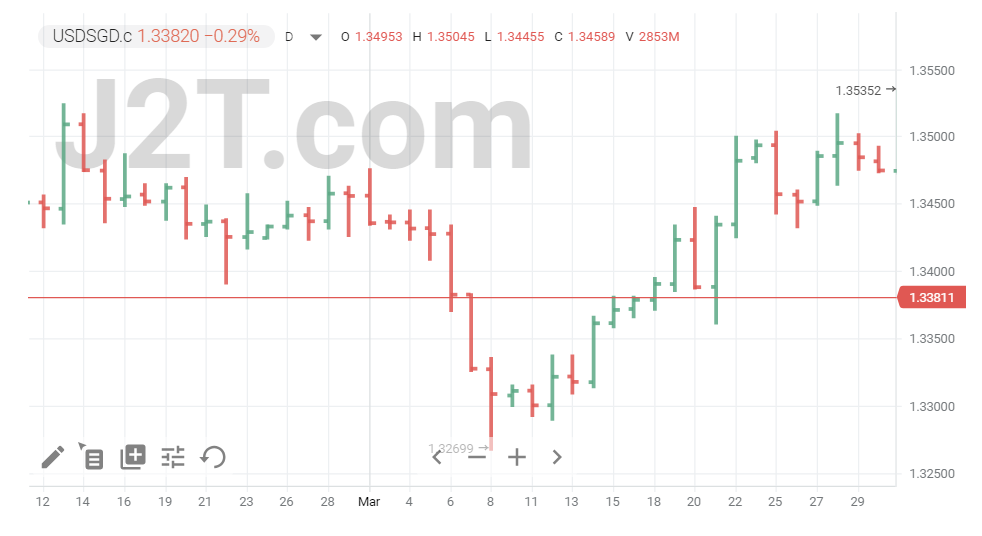
- Range bars (Μπάρες εύρους): Δείχνουν μόνο το εύρος ανάμεσα στην υψηλότερη και χαμηλότερη τιμή, χωρίς τις τιμές ανοίγματος και κλεισίματος. Είναι χρήσιμες για την απεικόνιση της μεταβλητότητας χωρίς επιπλέον στοιχεία που μπορεί να μπερδέψουν.
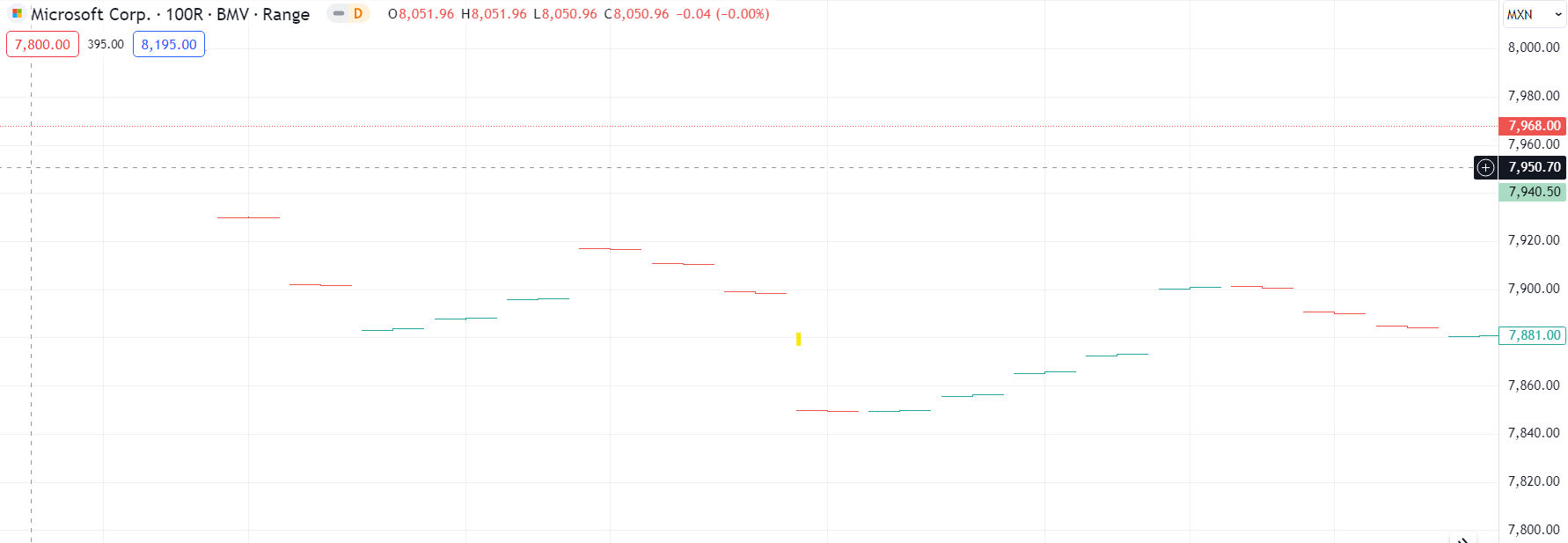
- Volume bars (Μπάρες όγκου): Περιλαμβάνουν και τον όγκο συναλλαγών μαζί με τις τιμές, δίνοντας πιο πλήρη εικόνα για τη δραστηριότητα της αγοράς.
Παράδειγμα #1
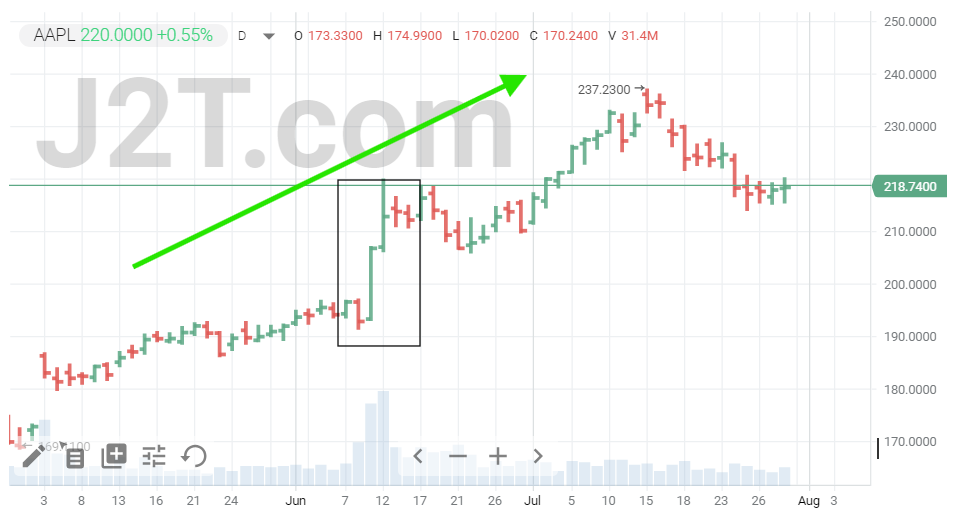
Σε ένα διάγραμμα μετοχής με σταθερή ανοδική πορεία, οι περισσότερες μπάρες είναι πράσινες. Στη μέση του γραφήματος υπάρχουν δύο πράσινες «αιχμές» (spike bars), που δείχνουν απότομη αλλαγή τιμής σε μικρό χρονικό διάστημα. Αυτές οι αιχμές προκάλεσαν σύντομη πτώση και αβεβαιότητα, αλλά η αγορά γρήγορα επέστρεψε στην ανοδική τάση.
Παράδειγμα #2
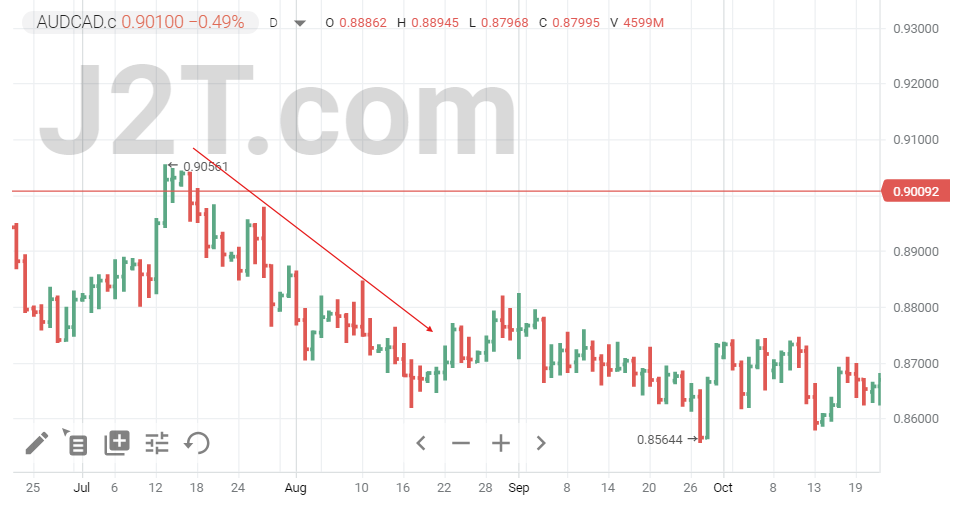
Σε ένα διάγραμμα μπάρας στην αγορά συναλλάγματος (forex) με πτωτική πορεία, οι κόκκινες μπάρες είναι περισσότερες από τις πράσινες, κάτι που δείχνει καθαρά το αρνητικό κλίμα. Επίσης, σε πτωτικές αγορές οι μπάρες συνήθως γίνονται πιο μακριές, δείχνοντας μεγαλύτερη μεταβλητότητα στις τιμές.
Οφέλη
Ακολουθούν μερικά βασικά οφέλη από τη χρήση γραφημάτων μπάρας στο trading:
- Ιστορική ανάλυση: Βοηθούν τους traders να εξετάζουν παλαιότερες διακυμάνσεις και τάσεις τιμών, ώστε να προβλέπουν με μεγαλύτερη ακρίβεια τις μελλοντικές κινήσεις της αγοράς.
- Επίπεδα στήριξης και αντίστασης: Επιτρέπουν τον εντοπισμό σημαντικών επιπέδων, χρήσιμων για τον καθορισμό σημείων εισόδου και εξόδου στις συναλλαγές.
- Αξιολόγηση μεταβλητότητας: Το μήκος και το σχήμα των μπαρών δείχνουν πόσο ασταθής είναι η αγορά. Μακρύτερες μπάρες σημαίνουν μεγαλύτερες διακυμάνσεις και πιθανές ευκαιρίες συναλλαγών.
- Σχηματισμοί τιμών: Διευκολύνουν τον εντοπισμό σχηματισμών τεχνικής ανάλυσης, όπως διπλές κορυφές, διπλοί πυθμένες ή ο σχηματισμός «κεφάλι και ώμοι», που δείχνουν πιθανές αλλαγές στην αγορά.
- Εντοπισμός τάσεων: Η απεικόνιση της πορείας των τιμών με γράφημα μπάρας βοηθά στον γρήγορο εντοπισμό και την επιβεβαίωση των τάσεων της αγοράς.
Γράφημα μπάρας vs ιστόγραμμα vs γράφημα στήλης
Παρότι τα γραφήματα μπάρας, τα ιστογράμματα και τα γραφήματα στήλης μπορεί να φαίνονται παρόμοια, στην πραγματικότητα έχουν διαφορετική χρήση στην ανάλυση δεδομένων.
- Γράφημα Μπάρας: Παρουσιάζει μεμονωμένα δεδομένα τιμών για συγκεκριμένες χρονικές περιόδους. Δείχνει την υψηλότερη, τη χαμηλότερη, την τιμή ανοίγματος και την τιμή κλεισίματος, κάτι που το καθιστά βασικό εργαλείο για την ανάλυση τάσεων και μεταβλητότητας στην αγορά.
- Ιστόγραμμα: Δείχνει την κατανομή αριθμητικών δεδομένων και χρησιμοποιείται κυρίως για να παρουσιάσει συχνότητες ή πιθανότητες μέσα σε ένα σύνολο δεδομένων. Σε αντίθεση με το γράφημα μπάρας, δεν εστιάζει σε χρονικά δεδομένα.
- Γράφημα Στήλης: Μοιάζει με το γράφημα μπάρας, αλλά χρησιμοποιείται για τη σύγκριση κατηγοριών δεδομένων και όχι χρονοσειρών. Στο trading είναι λιγότερο διαδεδομένο, αλλά μπορεί να χρησιμοποιηθεί για να συγκρίνει διαφορετικά περιουσιακά στοιχεία (forex, συμβόλαια μελλοντικής εκπλήρωσης, δείκτες κ.λπ.) ή τμήματα της αγοράς σε ίδιο χρονικό διάστημα.
Γράφημα μπάρας vs γράφημα κηροπηγίων
Τα γραφήματα μπάρας και τα γραφήματα κηροπηγίων είναι βασικά εργαλεία στην τεχνική ανάλυση. Σε αντίθεση με τις μπάρες, τα κηροπήγια δείχνουν τα ίδια στοιχεία αλλά με πιο έντονη οπτική παρουσίαση.
Κάθε κηροπήγιο έχει ένα χρωματιστό σώμα που δείχνει αν η τάση είναι ανοδική ή καθοδική:
- Πράσινο ή λευκό: Ανοδική τάση (bullish) — η τιμή κλεισίματος είναι υψηλότερη από την τιμή ανοίγματος.
- Κόκκινο ή μαύρο: Καθοδική τάση (bearish) — η τιμή κλεισίματος είναι χαμηλότερη από την τιμή ανοίγματος.
Αυτός ο χρωματικός κώδικας κάνει πιο εύκολη την άμεση εκτίμηση του κλίματος στην αγορά, βοηθώντας τους traders να παίρνουν πιο σωστές αποφάσεις.
Συμπέρασμα
Τα γραφήματα μπάρας είναι βασικό εργαλείο στην τεχνική ανάλυση. Δίνουν μια καθαρή εικόνα των αλλαγών στις τιμές σε συγκεκριμένο χρονικό διάστημα, δείχνοντας σημαντικά στοιχεία όπως την υψηλή, τη χαμηλή, την τιμή ανοίγματος και την τιμή κλεισίματος.
Όμως, όπως και με κάθε άλλο εργαλείο trading, τα σήματα και οι σχηματισμοί που δείχνει το γράφημα μπάρας δεν πρέπει να λαμβάνονται ως απόλυτα. Γι’ αυτό είναι καλό να χρησιμοποιούνται σε συνδυασμό με άλλα εργαλεία τεχνικής ανάλυσης.
Συχνές ερωτήσεις (FAQs)
Τι είναι το γράφημα μπάρας στο trading;
Ένα γράφημα μπάρας απεικονίζει την κίνηση της τιμής ενός περιουσιακού στοιχείου σε μια συγκεκριμένη χρονική περίοδο, όπως μία ημέρα ή μία εβδομάδα. Κάθε μπάρα δείχνει την υψηλότερη και τη χαμηλότερη τιμή, καθώς και τις τιμές ανοίγματος και κλεισίματος.
Ποια είναι η διαφορά μεταξύ γραφήματος γραμμής και γραφήματος μπάρας στο trading;
Το γράφημα γραμμής δείχνει μόνο τις τιμές κλεισίματος με την πάροδο του χρόνου, σχηματίζοντας μια συνεχόμενη γραμμή. Το γράφημα μπάρας παρέχει πιο λεπτομερή εικόνα, εμφανίζοντας τιμές ανοίγματος, κλεισίματος, υψηλές και χαμηλές τιμές.
Ποια είναι η διαφορά μεταξύ κηροπηγίων και μπαρών στο trading;
Και τα κηροπήγια και οι μπάρες απεικονίζουν την κίνηση των τιμών. Τα κηροπήγια χρησιμοποιούν χρωματιστά σώματα για να δείξουν το εύρος μεταξύ τιμής ανοίγματος και κλεισίματος. Οι μπάρες χρησιμοποιούν μία κάθετη γραμμή για το εύρος υψηλής–χαμηλής και μικρές παύλες για τις τιμές ανοίγματος και κλεισίματος.
Τι μπορεί να σας δείξει ένα γράφημα μπάρας;
Ένα γράφημα μπάρας μπορεί να υποδείξει τις τάσεις της αγοράς, τη μεταβλητότητα και πιθανά σημεία αντιστροφής. Αναλύοντας τις μπάρες, ένας trader μπορεί να εντοπίσει σχηματισμούς όπως υψηλότερες κορυφές, inside days και βασικά επίπεδα στήριξης και αντίστασης.
